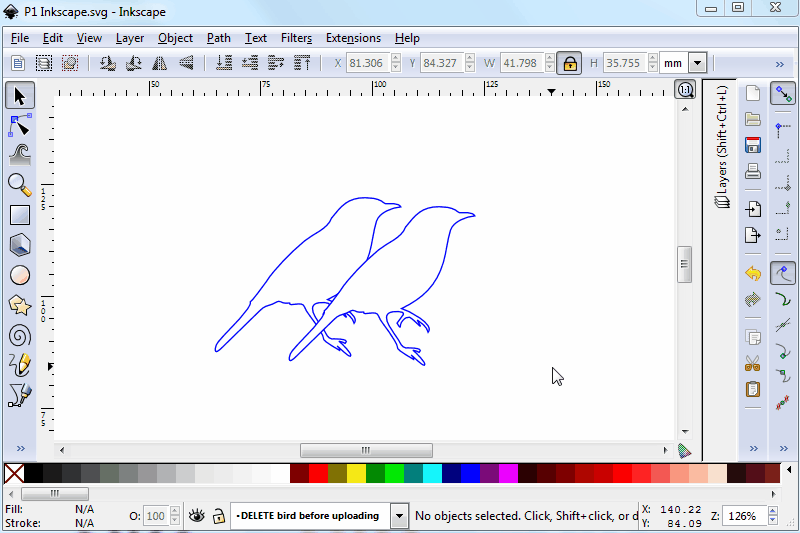

You can use squares, circles, stars, or any other shape). To clip an image (assuming you’ve imported your image to Inkscape), first create the shape you’ll be using to clip or “cut” your image.

This first method for cropping images allows you to cut out a shape using Inkscape.īy creating geometric shapes and then clipping your image, you can easily cut out any shape you want on a jpeg or any other raster file, including circular, rectangular, triangular, and elliptical shapes. With clipping, you can crop in Inkscape by using regular shapes, objects such as text, or paths. It’s like using a cookie cutter to create a cookie from dough. Perhaps, beofre saving, duplicate the traced layer, lock the imported background layer, rename the layers from path-12345 to "tracesettings-x-y-z" etc.The clip operation in Inkscape lets you place a vector shape, object or path on top of an image in order to “clip” or cut a portion of that image according to the shape used. I want Inkscape to import a PNG picture, autotrace it with some settings, save it as SVG.

I've tried the " action" command-line option inkscape -without-gui -actions="file-open:my.png"Īnd this brings up the small "png bitmap image import" dialog, waiting for me to confirm.Īlso I've tried the verb command line option inkscape -with-gui -verb="FileImport:my.png"Īnd this opens the large "Select file to import" dialog (ignoring my -verb argument) I'd like to convert simple sketches from PNG to SVG.Īnd I want to do this in a Bash for-loop, with different autotrace settings (number of passes ignore Speckles with max X pixels width) etc. Then I've realised that Inkscape has "autotrace" now integrated in its codebase. I've tried to install a package, and to compile it from the source. I have tried the old command line tool autotrace on Linux, but I could not get it to run. (most Qs here on SO are the other way around) I want to automate "raster to vector" conversions.


 0 kommentar(er)
0 kommentar(er)
